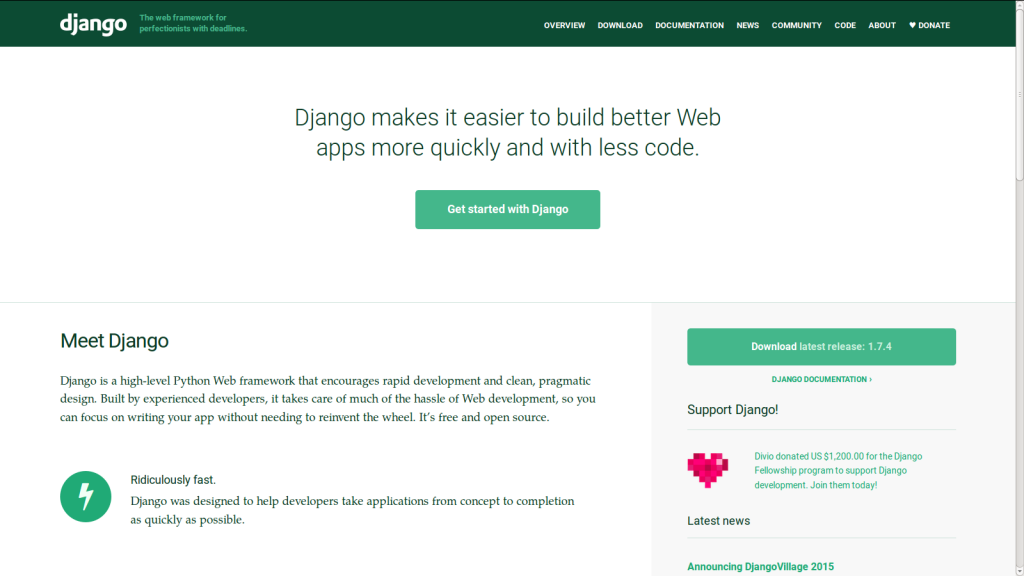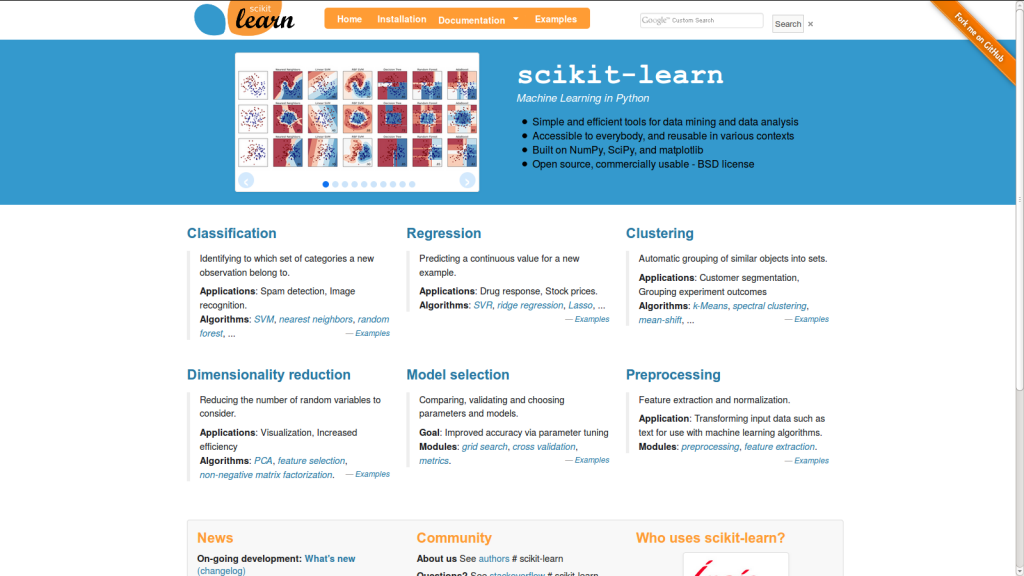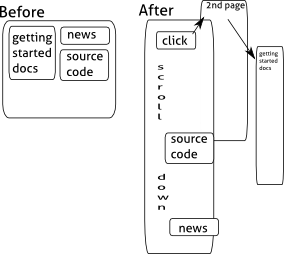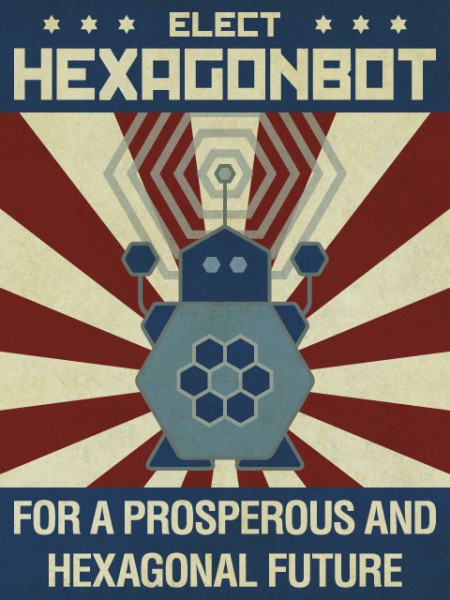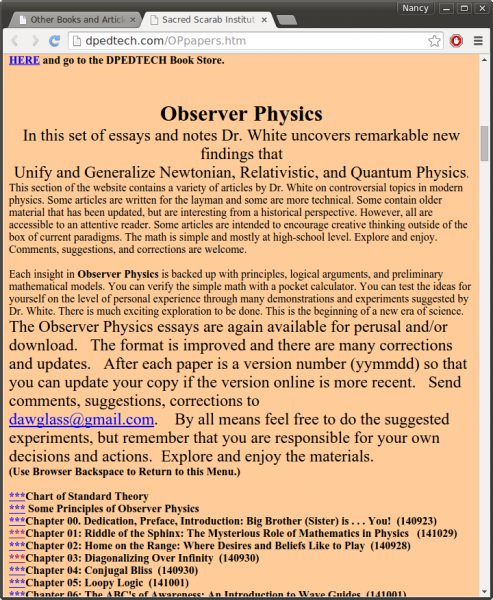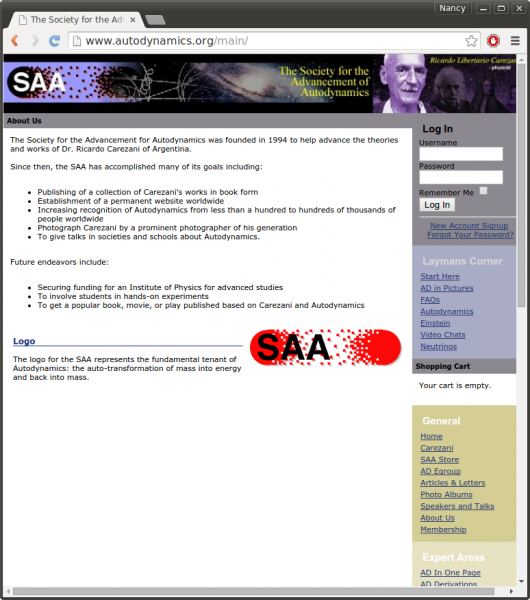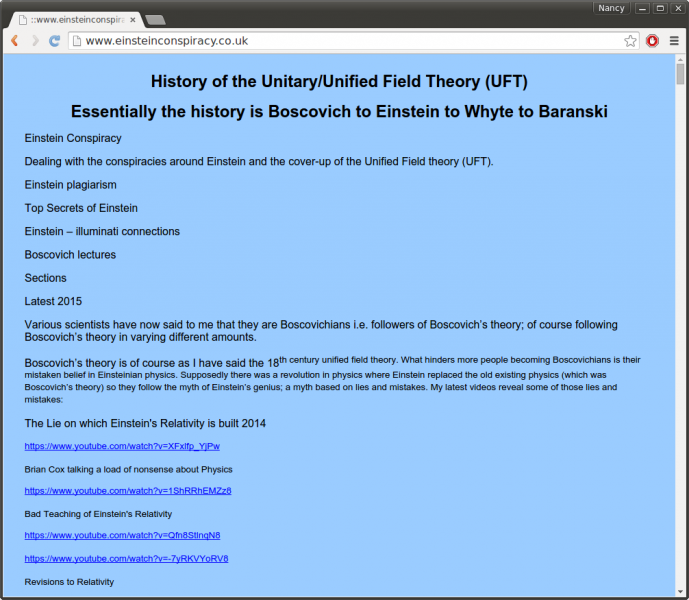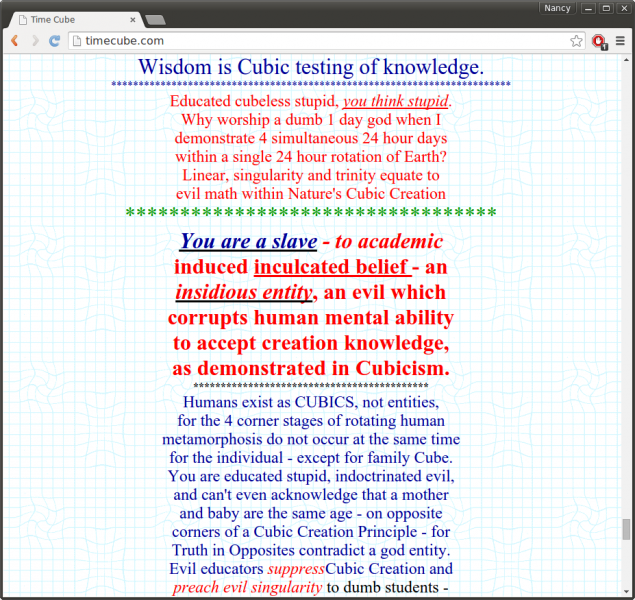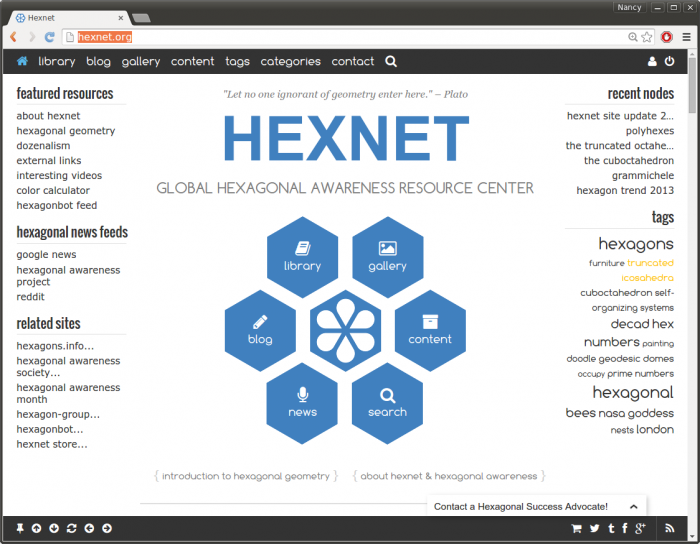I draw my examples from open-source software (OSS) projects, but the latest webdesign trends in general really tick me off. I like objects that convey information well, and such objects we often find visually pleasing as well, but it we shouldn’t be sacrificing function for form, form should enhance function. Yes, I have strong opinions about design for conveying information.
Especially when I’m doing technical work, such as evaluating whether to adopt a piece of open-source software (for instance, try the picking a javascript tool to learn for the first time: d3, angularJS, node, flask, kinect.js, jQuery), I really appreciate “first contacts” that tell me in 10 seconds :
- What is this thing?
- Why would I care about this thing?
- Is it worth the effort to learn this thing?
Source: http://stevelosh.com/blog/2013/09/teach-dont-tell/, which is a post “about writing technical documentation for programming languages and libraries.” Really, read it if you are at all interesting in having anyone else use your OSS project. After all,
The purpose of technical documentation is to take someone who has never seen your project, teach them to be an expert user of it, and support them once they become an expert.
okay, so what’s wrong with the internet today, you might ask?
chief complaints
1) Dumb websites that are 5% content and 95% whitespace.
2) Why do I have to clone, install dependencies, and compile my websites now? Whatever happened to good ol’ HTML view-source copy-pasting?
complaints in rant-worthy detail
1) Whitespace is good in moderation. Yes, don’t be afraid of whitespace. No, don’t waste my time scrolling down through empty galaxies of space. WTF. Hasn’t anyone heard of designing “above the fold“?
I’m not browsing for the latest python library to use on a tablet, I’m either on my laptop or my phone. What is this tablet interface thing? You can design for mobile / tablet without making your default website look butt-ugly on large monitors. I’m particularly ticked off right now because two of the projects I had bookmarked a month ago as being examples of “good homepage design” have converted into derp designs :/
december 2014

february 2015
ugh, it’s like watching ubuntu upgrade into a progressively worse and worse UI-wise. (for the record, I use cinnamon and docky on Ubuntu 14.04 and I will fight to keep this working on my laptop). THERE’S SO MUCH USELESS WHITESPACE at the top left / right, ahhhhhhhh it’s infuriating to look at (I’m also really hungry, which is probably why I’m so grumpy right now)
As John Morris succinctly put it in Annoying Trends in Modern Web Design:
Minimalism is the practice of reducing fluff and streamlining websites. When done correctly, this is very pleasing to the eye and makes finding what you want easy. But when taken to far, your page becomes pointless.
good design
Whitespace? Yes. Mobile-friendly? Yep, checks out on my phone. Conveys necessary information in an efficient manner? Yep.
The other website is getfedora.org, but I can’t find a “before” screenshot for them, so I’ll spare them for now.
—
I started on this post a week or two ago, and I can’t quite remember the other points I was going to make, nor do I feel quite so angry (I think I was tired, sleepy, and hungry at the time of this post), but upon further reflection, I think the key issue I have with all these sites obviously designed for the tablet is that,
1) on the desktop, there is no easy “page” metaphor where you flip between one section to the next with a swipe of your finger. If you’re going to treat tablet/mobile users as your first-class citizen, include navigation so that your site is intuitive on the desktop as well.
2) All the spaced-out, layered information (layered because you hid all the content under a metric ton of whitespace) (it’s clear people are designing for marketing: get them to click the button!) makes it very hard to build a mental map of your site. It’s like reading a book for ELDERLY PEOPLE WHO CAN’T SEE
EVERYTHING
IS
SUPER
SPACED-OUT
unnecessarily so. There’s a reason why everyone doesn’t just use the EXTRA LARGE FONT setting on their computers or ebook readers. It’s uncomfortable, and I can’t build a mental / visual map of where all the information is. Take this site:
https://www.shuttleworthfoundation.org/fellows/
This site is well-designed for consuming information / first-time users exploring the site, but not for linking to content or commenting on it or remembering where things where on the site.
Before:
Getting started is up top, source code is to the right, news about the community over to the left.
After:
Getting Started: Click the top button, then the link in the first sentence on that page.
Source Code: Scroll down about halfway on the page.
News: Scroll down all the way on the page.
Conclusion
stop copying other people’s designs willy-nilly to look cool without thinking about the usability of your site. =___=

